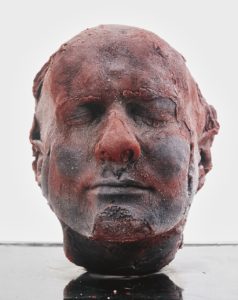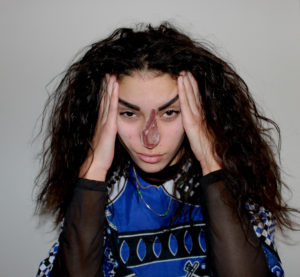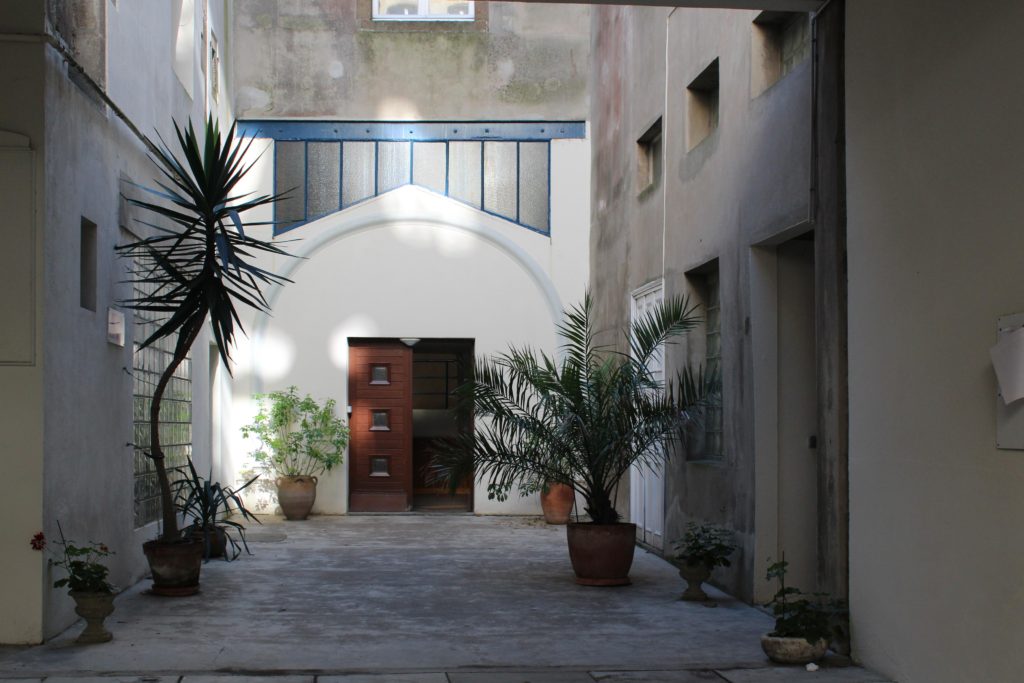
Daily Archives: November 12, 2018
Filters
Research – Joachim Schmid
Joachim Schmid was born in 1955 in Balingen; he lives and works in Berlin. His works have been presented in solo and group exhibitions worldwide, including at Lieu d’Art et Action contemporaine de Dunkerque (2015), the Museum Folkwang in Essen (2014). He has published over one hundred artist books. His works can be found in prestigious public collections, such as the Bibliothèque nationale de France in Paris, the Daelim Contemporary Art Museum in Seoul.

Using other people’s (often mundane) photographs, he creates artwork that is alluring, intriguing, and captivating. He revels in photographs that other people lose or throw away in public, especially if they seem to have been discarded with some animosity or intense feeling. His project ‘Pictures from the Street’ 1982-2012, features countless images of authoress photographs and remnants of images that have been left thrown of discarded, that he has encountered by chance by walking through the streets of public spaces through out the world. The collection has more than 900 images, if he finds an image that has been ripped or towrn apart he will try his best to reassemble the image and then disply the imag on arhival paper.Displaying the images inchronological order noting the date and place where each image was found.

A project that has become one of Schmid most notable works is that he created an ‘institute’ that offered to safely recycle or re-use dangerous film and photos. The Institute for the Reprocessing of Used Photographs became publicized worldwide, by chance, and Schmid was inundated with parcels of photos and negatives that people wanted to dispose of, safely. One of the parcels that was sent to the ‘institute’ was a parcel of over a decade of negative images from a professional photo studio, how ever the original company that sent the parcel had sliced the images in half to try and destroy their value, but what Schmidt discovered that he was able to put two half’s of separate images together to create weird and bizarre compositions.

Joachim Schmid created this image after he sent out a request to be sent images that people wanted to be disposed of in a safe and confidential manner, from a photograph company he received a box in which all of the images had been sliced in half to try and destroy the value of the images. What Joachim did was found that he was able to combine two separate images to make an entirely different image. On first glance of this image, it looks like the young girl on the left hand side is an archival images of the grown woman of the left, so that the photograph has decades between them. The only detail that we can see of the woman face is the eyes which can be seen to have a wrinkles beginning to appear .The image looks as if it was taken in a very professional environment, such as a photograph studio, it looks as if artificial lighting was used to take both images.
EXPERIMENTATION

These pictures are experiments of my own existing material from previous projects. Each piece of material that I have taken from my photographic archive were taken with different incentives yet i have merged them together and created images with different meanings within their context. I’ve done this to further explore my idea of how western culture identifies with meat, in the hope of developing an alternative response that incorporates emotion and a story within my images. This inspiration has stemmed from the artist Marc Quinn and his ongoing series of self-portrait sculptures ‘Self’, sculptured entirely from his own blood, capturing his aging throughout the years. Quinn’s sculptures are innocently morbid, encapsulating the idea that we are all just made of meat. He’s used mediums from his own body without harming himself. Throughout history, there has always been the repeated idea that the body is sacred and should be left untouched after death. When exposed, the internal body has always been associated with death, perhaps connected with the fragility of life and the fragility of the body, yet the exposure of our insides is often forbidden through the eyes of religion. Western Religion has always taught people to respect the body before and especially after death. This also aligns with our laws and standards; it is commonly known that any mutilation of the body is forbidden. Although we carry out respect for our own bodies, the consummation of meat is often overlooked. The whole process of producing meat violates and mutilates an animals body before and after death. Surely all life in every shape and form should be protected, yet we break this rule by reassuring ourselves that animals are less than us and therefore, it is okay to enforce ill treatment upon them just to satisfy an acquired taste that everyone picks up from an early age. These photos that I have created is a reflection of ourselves and our diets. I have placed another animals internal layers above the external layers of these portraits, just for the sake of spite; we can’t mutilate one another but can mutilate beings ‘lesser’ than us – I have surfaced how this reflects on us – almost like the infamous Lady Macbeth from Shakespeare’s ‘Macbeth’, relating to the scene when she hallucinates blood on her hands. The meat connotes death within a picture of a life.





Photography and the truth
For this small mini project I wanted to focus on the photos which I think had the strongest emotional impact on the viewer and the largest negative representation of mankind. This is a clear representative of an image you wish did not tell the truth. This is an image to which you do not want to show a reflection of man kind and belive in the cruelty that lies behind what the image contains. In the modern day many people ignore what is not around them or what they can be on screen. So capturing a harsh truth of humanity in order to represent what their ignorance and carelessness has done and effected others around the world. Children are viewed by the large majority to be innocent. They are not responsible for their own decisions and yet have to face the consequence pf what adults tell them to say and do. The life of a child is held high than that of an adult. Because of this these images speak louder than anything anyone could ever say. It highlights such a horrendous political situation that people ignore, but faced with the reality they see such innocent people affected it should change their mind. these images are not sublime. There is no beauty in this image other than masses of pain and outrage. This image should not be seen as just shocking but should be seen as though provoking for change within the world.

The way to which the photographer with the body in such a lifeless condition is the most painful part of this image. There is a complete lifelessness and it removes all sense of hope. Children should be seen as playing and happy, the lack of eye contact and a boy lying face down. tHe headline for this article was a syrian boy who has drowned brings migrant focus into attention.
ISTANBUL — The smugglers had promised Abdullah Kurdi a motorboat for the trip from Turkey to Greece, a step on the way to a new life in Canada. Instead, they showed up with a 15-foot rubber raft that flipped in high waves, dumping Mr. Kurdi, his wife and their two small sons into the sea.Mr. Kurdi tried to keep the boys, Aylan and Ghalib, afloat, but one died as he pushed the other to his wife, Rehan, pleading, “Just keep his head above the water!”Only Mr. Kurdi, 40, survived.“Now I don’t want anything,” he said a day later, on Thursday, from Mugla, Turkey, after filling out forms at a morgue to claim the bodies of his family. “Even if you give me all the countries in the world, I don’t want them. What was precious is gone.”It is an image of his youngest son, a lifeless child in a red shirt and dark shorts face down on a Turkish beach, that appears to have galvanized public attention to a crisis that has been building for years. Once again, it is not the sheer size of the catastrophe — millions upon millions forced by war and desperation to leave their homes — but a single tragedy that has clarified the moment. It was 3-year-old Aylan, his round cheek pressed to the sand as if he were sleeping, except for the waves lapping his face. This went rocketing across the media and sparked, as a political bombshell across the Middle East and Europe, and even countries as far away as Canada, which has up to now not been a prominent player in the Syria crisis. Canadian officials were under intense pressure to explain why the Kurdi family was unable to get permission to immigrate legally, despite having relatives there who were willing to support and employ them. So far, the government has only cited incomplete documents, an explanation that has done little to quiet the outrage at home and abroad.

There are so many aspects to this image which make it wholly disturbing. First of all the boy of the child is almost translucent, his bones clearly ripple throughout him and their is no substance of life and embodiment to his should. His small figure in such a composition that has connotations of defeat, His lack of eye contact and oblivion to his lack of life is reflected through his face down on the door, not having enough energy to even lift his head. Birds of prey live and eat off the weak and the dying, because of this it is evident that the starving child is so close to death. The bird is equally centered in the composition as it immortalised the figure of death behind the boy himself.
From these observations I have learnt that, somethings people expect or anticipate the truth to not be true, or perhaps in circumstances they wish it want. So many people spend their times purposely ignorant to others than themselves as then nothing is seemed to be their problem. However these actions of doing nothing still consequences in the deaths ad suffering of many.through photography telling the truth such as these then there would never be any cause for change within the world.I believe in society everyone carries an instinct within themselves to help others, perhaps this is seen through a maternal or paternal outlook on wanting to care for children. I believe that once again the effect of this image being a child will in turn create a much larger impact altogether rather than just that of a person. You cannot blame the child as it is an adults duty to care and to be responsible for the outlook and loving of a child, to raise and let them live in a life which they are happy and health. This sheer amount of malnourishment is consequently a factor that even in the worst states of poverty within the us or England would never happen. It shows how for a child to be in this help. this poor of a condition and people wanting to help, how little everyone around the child has, and no ones ability to help. This narrative documentary tells so much of as story and would hopefully speak some truth to people, It has not been a deception of an act as this is evident within the posture and lack of life within the young boy. It deems how we need to urge those with money to help, not just those close to them, but the ones who need it most. Because of this the large exploitation of the image itself, it allows so many to see a sit that only a few have seen in person. The though of poverty has finally been out into . appreciable consequence of their inhumanity. The change has sparked many and hundreds of campaigns, for starvation around places such as Africa, yet this will never reach everyone who needs it.Within the article itself speaks about the photographer and his intentions and what he saw. After spending many days in a village in south Africa he headed out to the bush. He heard ‘whimpering’ and come across an ’emaciated’ toddler. This little boy had collapsed whilst attempting to make a trip to the feeding center. the photographer was not allowed to touch the victims due to to disease. After 20 min of gaining back energy the little boy continued to the feeding center.
The irony within the image conceptually is how well fed the vulture is, this harsh juxtaposition posses the thought hat the vulture has been eating off the well nourished who has sadly died. It shows the harsh reality and inability for people being deprived of what they need for survival. The New York times ran this photo, there was much debate on what happened to the child and the irony of peoples concern when they themselves have done nothing to help this boy. However while telling this truth, many questioned the photographer for taking the picture and not helping to the aid of the child instead. This lead to many debates on a photographers duty to intervene. However sadly it comes out 14 years later around when the child was 16 he died of malialsial fever. Although winning awards and spreading awareness of crucial and dark situations such as this, he has never been able to forget that day and says ‘ i am haunted by the vivid memories of killing and corpses anger and pain’ Technically the image has a strong composition both focusing on the irony and well being of the bird towering over the fragility of the boy, this conceptual shows the weakness of mankind and how we have been reduced to animals when having nothing to eat and no longer thriving as a community. I believe there is such a core importance of showing images such as these otherwise nothing and no change would ever come of anything. Not because people don’t want to help, but they might be ignorant to the thought of something as terrible as this happening within the world.
There is such a strong sense of propaganda within these images. these images being used by the media as a weapon against governmental regimes. When an image is in a newspaper there is a certain reliability that is dependent on the paper for being truthful. this weapon too needs to have such a pivitol point to encourage patriotism and promote national interests. If this image wasn’t so upsetting, people would forget about it and move on with a new paper the next day.








